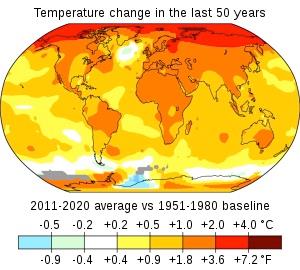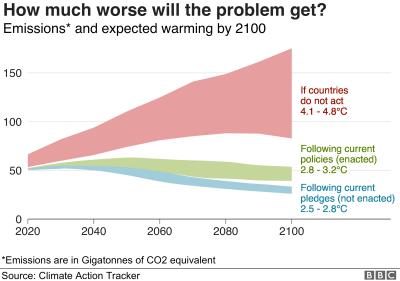 August has been a wake-up month for those who deny the reality of climate change. We have witnessed unprecedented once-in-a-thousand year floods in central Europe and China. Vast areas of the planet are in flames including forests in our Western states and in Greece and Turkey. Australia has experienced severe and extensive bush fires in recent years. The National Oceanic and Atmospheric Administration (NOAA) has forecast more and stronger hurricanes that will impact the Eastern seaboard and Gulf coast through November. There is evidence that the Gulf Stream is weakening in intensity. Droughts especially in the West are severe and are lasting for multiple years. Water supply is diminishing as evidenced by the fact that the largest lakes in California are at less than one third of capacity and restrictions have been placed on consumption from the Colorado River system. Coral reefs are disappearing as both water temperature and carbon dioxide content of oceans rise. The Amazon Forest, regarded as the "world's lung" is now a net generator of carbon dioxide in the eastern quadrant due to deforestation by logging and burning with vast areas converted to livestock and crop agriculture.
August has been a wake-up month for those who deny the reality of climate change. We have witnessed unprecedented once-in-a-thousand year floods in central Europe and China. Vast areas of the planet are in flames including forests in our Western states and in Greece and Turkey. Australia has experienced severe and extensive bush fires in recent years. The National Oceanic and Atmospheric Administration (NOAA) has forecast more and stronger hurricanes that will impact the Eastern seaboard and Gulf coast through November. There is evidence that the Gulf Stream is weakening in intensity. Droughts especially in the West are severe and are lasting for multiple years. Water supply is diminishing as evidenced by the fact that the largest lakes in California are at less than one third of capacity and restrictions have been placed on consumption from the Colorado River system. Coral reefs are disappearing as both water temperature and carbon dioxide content of oceans rise. The Amazon Forest, regarded as the "world's lung" is now a net generator of carbon dioxide in the eastern quadrant due to deforestation by logging and burning with vast areas converted to livestock and crop agriculture.
 Recognizing that average annual world temperature had risen 2.5F above the pre-industrial age, the Intergovernmental Panel on Climate Change convened a 2015 meeting in Paris. Participants agreed to limit global warming to below 3.4F by 2050 with a recommendation that, if possible, the rise in global temperature should be held to 2.7F. The Climate Action Tracker established following the Paris meeting has monitored global temperature and other environmental effects and has determined that global temperature might rise by 6.7F above pre-industrial levels by 2100 without remedial action.
Recognizing that average annual world temperature had risen 2.5F above the pre-industrial age, the Intergovernmental Panel on Climate Change convened a 2015 meeting in Paris. Participants agreed to limit global warming to below 3.4F by 2050 with a recommendation that, if possible, the rise in global temperature should be held to 2.7F. The Climate Action Tracker established following the Paris meeting has monitored global temperature and other environmental effects and has determined that global temperature might rise by 6.7F above pre-industrial levels by 2100 without remedial action.
Environmental scientists have attempted to predict the possible effects of a 5F rise in temperature over the coming two decades. Models show that two thirds of the world's population will experience drier conditions with one-in-100-year events such as severe droughts occurring at two to five year intervals in Africa, Australia, Southern Europe and the central United States. With a 5.4F increase in average world global temperature, a quarter of the world's population would be subjected to starvation. A heat-related collapse of the rice crop in China has a probability of one over one hundred years with a 2F increase in seasonal temperature. The probability increases to one in ten years with a global rise of 5.4F.
Increasing world temperature is responsible for the melting of ice caps. An increase of 3.6F will melt the West Arctic ice sheet within a decade and collectively the release of water will result in a rise of as much as five feet in sea level before the turn of this century. In late July, more than forty percent of the Greenland ice cap was covered with melt-water with a sharp reduction in summer sea ice in the Arctic. With a 5F increase in global temperature, coastal cities will be uninhabitable by 2070.
World temperature increase will be unevenly distributed with regional values for North America and Europe increasing disproportionately to Africa and Asia, severely impacting crop production. It is possible that nations with high humidity due to their proximity to oceans will experience wet bulb temperatures in excess of 63F producing heat index values in excess of 120F. This is inconsistent with long-term survival and health. The Intergovernmental Panel has concluded that each 0.9F increase in global temperature will result in "clearly discernable increases and intensity of heat and heavy precipitation as well as droughts in numerous regions.
Mitigation is obviously required to avert a global catastrophe. Recently the U.S. in recognition of the consequences of malignant inactivity has rejoined the world community to address the overt problem of climate change. Since the dawn of the industrial age, increased standards of living for those with resources were derived from burning coal. As we have become more dependent on electrical power the source of the energy we now take for granted should be the subject of profound change. Technology to reduce carbon dioxide emission from coal-fired power generation is prohibitively expensive. Alternatives such as natural gas, available in profusion in the U.S. and at a reasonable price is preferable to coal as evidenced by the trend in converting power generation to more environmentally friendly natural gas. To meet standards of emission for greenhouse gases, methane release must be limited since this gas is more persistent and damaging to the environment then an equivalent quantity of carbon dioxide.
 The growing use of solar and wind generation, although currently expensive must be supported by public funding. It is also time to reevaluate nuclear generation of power that is innocuous to the environment. Impediments to greater use of this technology relate to disposal or reprocessing of spent nuclear fuel and also to rigorous and sometimes unnecessary regulatory oversight that requires a more rational and commonsense approach. There have been no new nuclear plants proposed or erected in the U.S. in decades, and many facilies are facing decommissioning. Japan and France that rely on nuclear power are reevaluating earlier decisions to transition from nuclear generation following the Fukushima Dai-ichi disaster in 2011.
The growing use of solar and wind generation, although currently expensive must be supported by public funding. It is also time to reevaluate nuclear generation of power that is innocuous to the environment. Impediments to greater use of this technology relate to disposal or reprocessing of spent nuclear fuel and also to rigorous and sometimes unnecessary regulatory oversight that requires a more rational and commonsense approach. There have been no new nuclear plants proposed or erected in the U.S. in decades, and many facilies are facing decommissioning. Japan and France that rely on nuclear power are reevaluating earlier decisions to transition from nuclear generation following the Fukushima Dai-ichi disaster in 2011.
Agriculture is responsible for ten percent of greenhouse gas emissions. The egg and broiler industries have accepted that they are jointly, along with all agricultural enterprises, responsible for greenhouse gas emissions and adverse environmental effects. Most poultry companies are now publishing sustainability reports with clearly defined goals to enhance conservation of water and energy and to reducing pollution and waste. The industry-wide collaboration in the form of the U.S. Roundtable on Sustainable Poultry and Eggs will incorporate a current life-cycle analysis for egg production. This will identify achievements and form the basis for future action.
Areas in which sustainability of egg production can be improved include greater use of solar power as in the E.U. The Continent leads the U.S. in environmental concern and remediation. Water use must be reduced through recycling and more efficient design of equipment and changes in production procedures. The desirability of establishing multi-million bird units in desert areas that require vast quantities of water for evaporative cooling is questioned. These complexes will ultimately deplete aquifers and lower the regional water table unless replenished by rainfall. It is obviously preferable from an environmental perspective to produce eggs in more temperate regions and transport product to areas of market demand, despite the energy used to move eggs westward on interstate highways. It is also noted that the energy required to transport ingredients is threefold more than the mass of shell eggs produced, so it is always environmentally and financially beneficial to produce eggs where corn, soybean meal and other ingredients are locally available.
Advances in genetics with complementary advances in disease control, nutrition and housing have made possible the production of eggs with reduced input of feed, energy and labor over the past fifty years. Deviations from progress in sustainability are exemplified by organic production and free-range and non-confined housing systems that run counter to optimal use of resources to produce a food with high nutrient density. The affluent few who are environmentally conscious should recognize that their misplaced anthropomorphism conflicts with optimal sustainability. A moral compromise is therefore required to establish a balance between environmental sustainability and rational welfare in order to optimize production of eggs and derived products.
We are in a situation analogous to a frog in a pot of water at 35F. Heating the water by 3F will not cause any physical concern for the unfortunate amphibian in the short term. The predictions of environmental scientists of the longer-term consequences of 3F to 5F increases in global temperature should be heeded. We owe succeeding generations the benefits of our stewardship of the environment and should not bequeath them a planet with mass starvation, flooding, hurricanes, droughts and warfare over resources leading to an ever-decreasing quality of life.